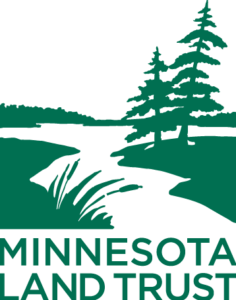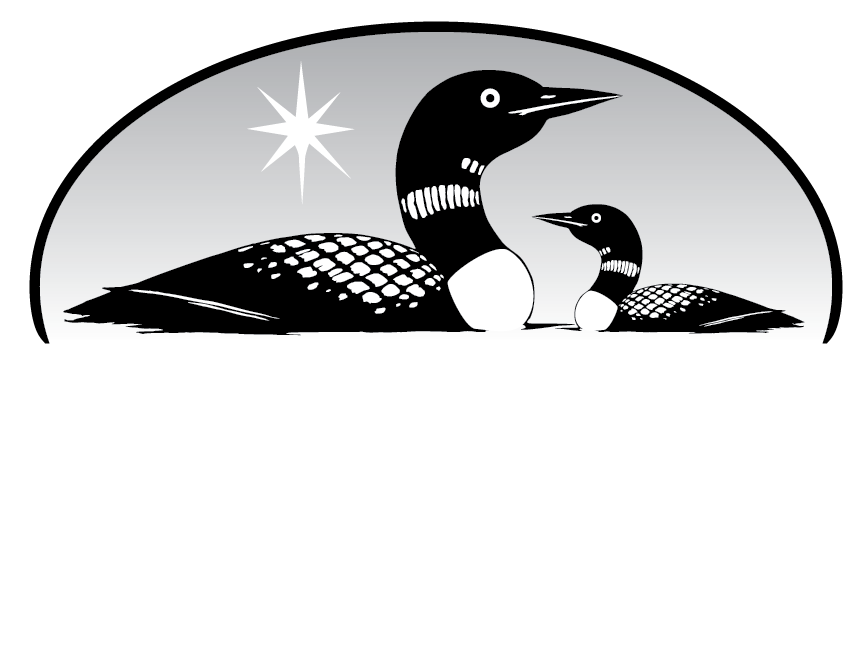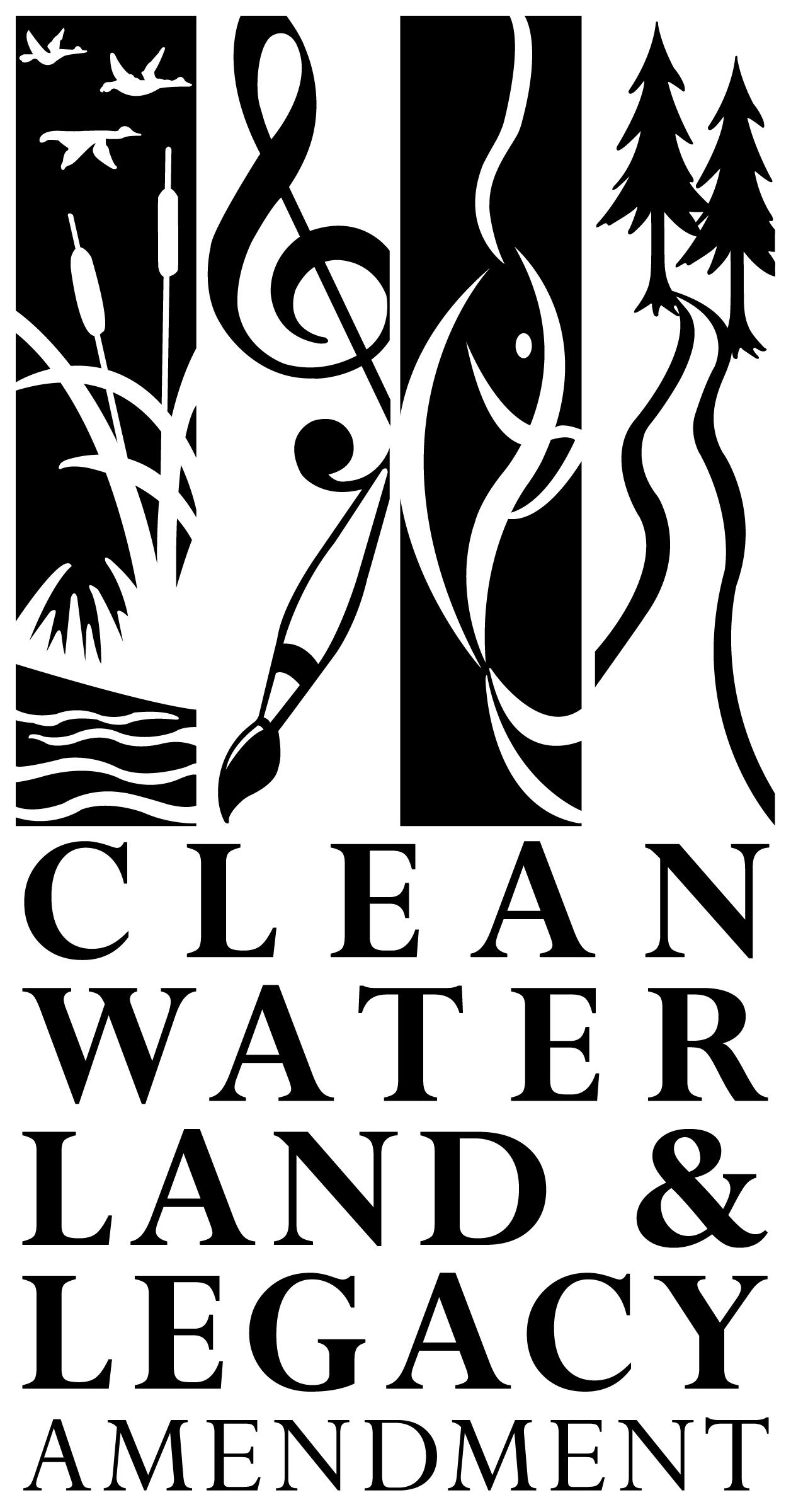Situated in Morrison County, Minnesota, within the Minnesota Land Trust’s Rum River & St. Croix River conservation program area approximately 15 miles from Mille Lacs Lake, this 552-acre protected property features rolling terrain with a mix of grasslands, forest, and wetlands.
In addition to the bison herd that grazes on various herbaceous grasses and forbs in the grasslands, it is home to several Minnesota Species in Greatest Conservation Need (SGCN) that rely on fields and meadows for habitat, including the bobolink and sedge wren.
The Mille Lacs Lake Area Before Europeans Arrived
The area where this property is located is the ancestral homeland of the Mdewakanton Sioux tribe. In fact, Bde Wakan (Spirit Lake, also known as Lake Mille Lacs) features prominently in Dakota creation stories. “Mdewakanton” means “People of Spirit Lake.”
This region is also the territory of the Anishinaabe people (also called Ojibwe), who settled in the region in the mid-1700s after migrating from the East to the “land where food grows on water.”
Prior to European settlement, the area around Mille Lacs Lake was a mixture of conifer bogs and swamps, big woods forest, and aspen-birch forests, including conifers, which is reflective of the protected bison grazing property today.
Sustaining Habitat Through Bison Conservation Grazing
The landscape on this property is managed sustainably using bison grazing as part of an innovative conservation grazing plan, an approach that restores a keystone species to its original land stewardship role after an approximately 200-year absence. And importantly, the habitat on this property is protected for future generations, ensuring that it will always be a viable natural space for bison and smaller prairie animals and pollinators.
So how, exactly, are the bison helping preserve land? Prairies require periodic disturbance to regenerate and support native species biodiversity. This disturbance is usually in the form of burning, grazing or mowing/haying.
The advantage of maintaining grasslands through conservation grazing when it’s a viable option is that it reduces the impact to other wildlife and preserves local air quality. The likelihood of disturbing or displacing other prairie inhabitants during a controlled burn or mowing is greater. And while controlled burns are a helpful management tool, they release carbon monoxide and soot into the atmosphere, which temporarily has a negative impact on air quality and sensitive species like birds.
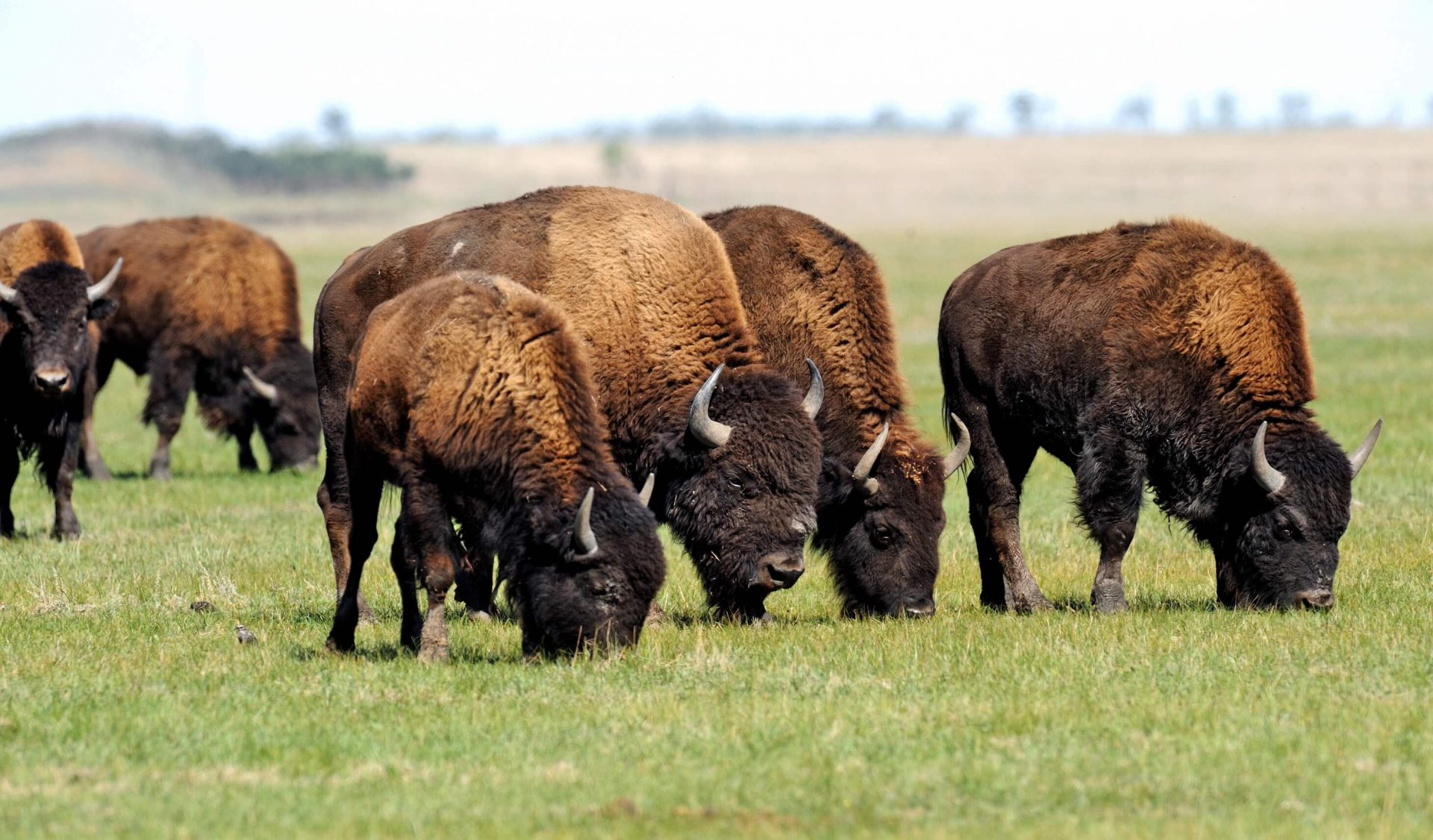
Plains Bison Critical to Shaping the Lands
At nearly six feet tall and weighing up to 2,000 pounds, bison are the largest land mammal in North America, once numbering in the tens of millions, and ranging from northern Mexico through the Great Plains and Eastern Temperate Forest regions of the United States.
Not only culturally significant to Indigenous people and critical for their survival, bison are considered an “ecological keystone species,” literally shaping the land and ecosystem through herd movement and behavior.
For example, as they moved across the land, they cropped grasses with their teeth, aerated the soil under their considerable bulk with their hooves, and even sowed native grass seeds as they knocked (or excreted) the seeds to the ground and trampled over them.
This naturally occurring, slow moving, intermittent disturbance of prairies across vast swaths of the United States, including the Great Plains region and the native prairies of Minnesota, preserved these healthy, resilient habitats which in turn helped other native species and Indigenous communities thrive.
Tragically, unsustainable western expansion, intensive “market hunting,” commercial slaughter and systemic extermination led to their near extinction by the end of the 18th century. Today, bison number about 500,000, with about 95% of that population managed as private domestic livestock.
Lakota People Take the Lead Restoring Plains Bison
The Lakota people, whose ancestral lands include present-day North and South Dakota, lived in a symbiotic and sacred relationship with the bison (Tatanka) for tens of thousands of years, relying on them for food, shelter, clothing, tools, and ceremonial objects.
Today, the Rosebud Sioux community is taking the lead to restore plains bison to the natural landscape in South Dakota, through the Wolakota Buffalo Range, a project whose goal is to restore bison to 28,000 acres of Rosebud Sioux Tribal lands.
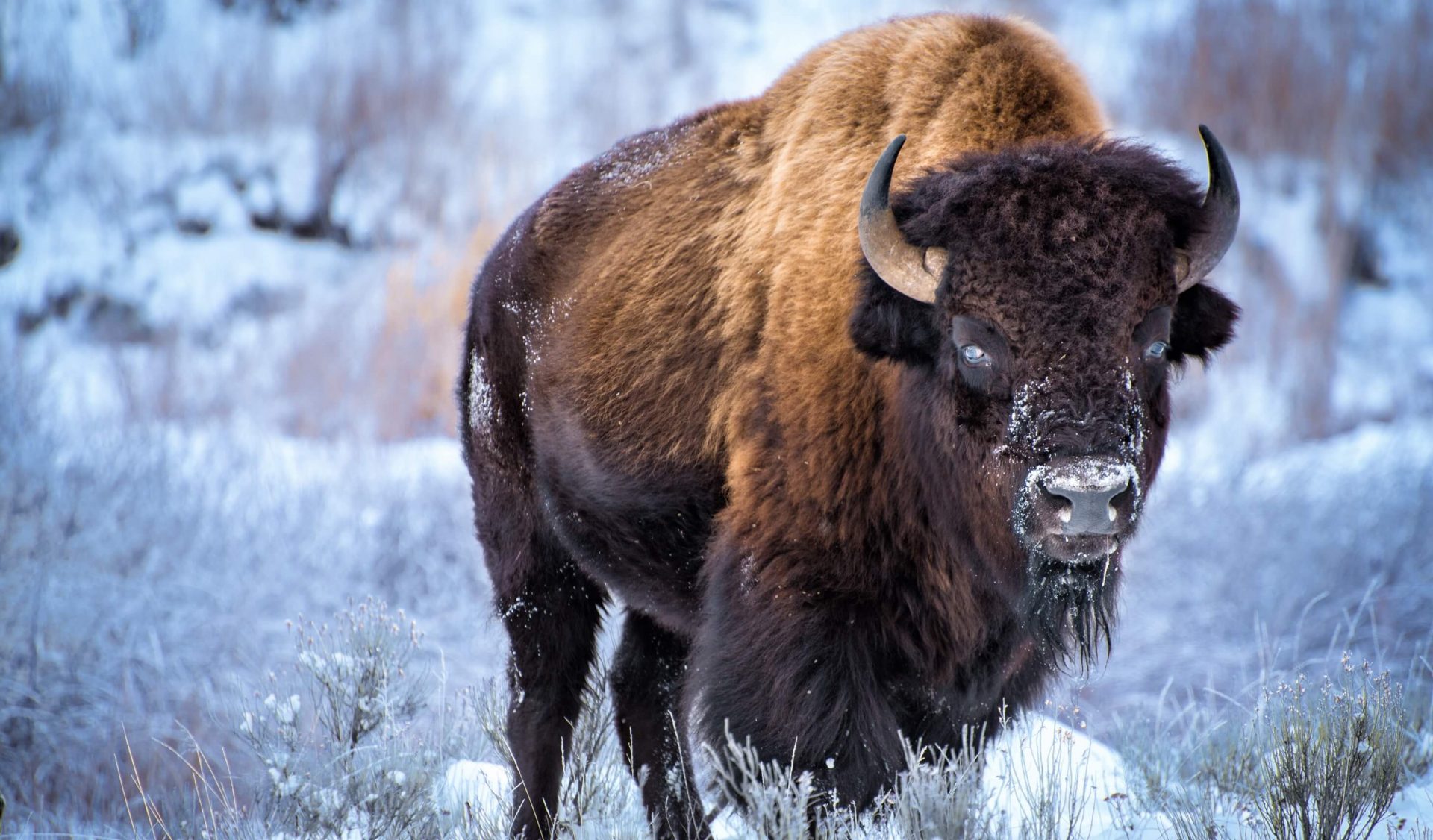
Declining Prairie Habitats and Climate Change
Before Europeans settled in Minnesota and began converting grasslands to farm fields in earnest, approximately one-third of the state was covered in prairie – that’s about 18 million acres (almost the size of Lake Superior). Today, just about 235,000 acres of native prairies remain, or a little over 1% according to the Minnesota DNR.
Grassland prairies are critical for hundreds of native species including pollinators. As part of the Mississippi Flyway they provide water, food, and shelter for millions of birds as they migrate between Central Canada and the Gulf of Mexico.
The destruction of bison and steady encroachment of agriculture on what were once bison grazing territories and Indigenous lands has had the effect of reducing native species biodiversity, increasing the threat of invasive species, and increasing pollution levels in water, in addition to adding carbon to the atmosphere while also reducing our ability to sequester it.
The net effect of these and other actions has been an acceleration of climate change.
Restoring More Native Prairie is One Solution
Restoring native prairies may be one solution to addressing environmental pollution and climate change as they function to clean water and store massive amounts of atmospheric carbon in the soil – up to 1.7 metric tons per acre per year.
How do we protect and restore more native prairie in Minnesota?
Since 76% of Minnesota’s lands are privately held, it’s imperative that we encourage adoption of sustainable agriculture practices among farmers; convert more row crop land to native prairie land and work with private landowners to restore native prairies on their property.
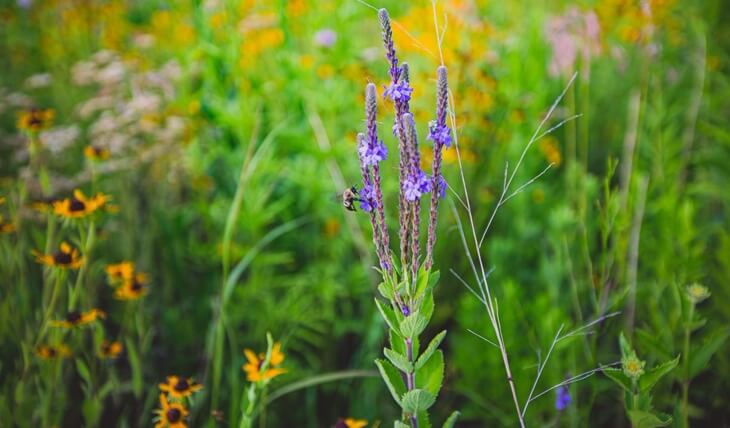
(Photo credit: Hansi Johnson)
How You Can Make a Difference for Minnesota’s Prairies
There are a number of ways you can help protect and restore native prairies and wildlife in Minnesota.
First, become a Minnesota Land Trust partner and a virtual land steward by giving a gift. Through our conservation easements program and restoration work, the Minnesota Land Trust is uniquely positioned as the only non-profit in the state able to make a significant conservation impact on privately held lands.
Do you own a large, rural tract of land? Consider partnering with Minnesota Land Trust to add a conservation easement. We work with farmers and rural landowners to restore historic prairie and oaks savanna habitat on their lands. We may be able to help you too! Contact us to learn more.
Finally, even if you don’t own a large property, improving and converting smaller suburban or urban parcels helps local wildlife and pollinators, especially when multiple households in a neighborhood combine to create a larger connected habitat.
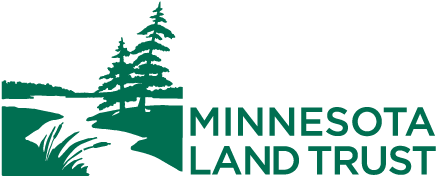
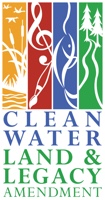 Funding for this project was provided by the Outdoor Heritage Fund as appropriated by the Minnesota State Legislature and recommended by the Lessard-Sams Outdoor Heritage Council (LSOHC) to restore, protect, and enhance Minnesota’s wetlands, prairie and forest habitats.
Funding for this project was provided by the Outdoor Heritage Fund as appropriated by the Minnesota State Legislature and recommended by the Lessard-Sams Outdoor Heritage Council (LSOHC) to restore, protect, and enhance Minnesota’s wetlands, prairie and forest habitats.